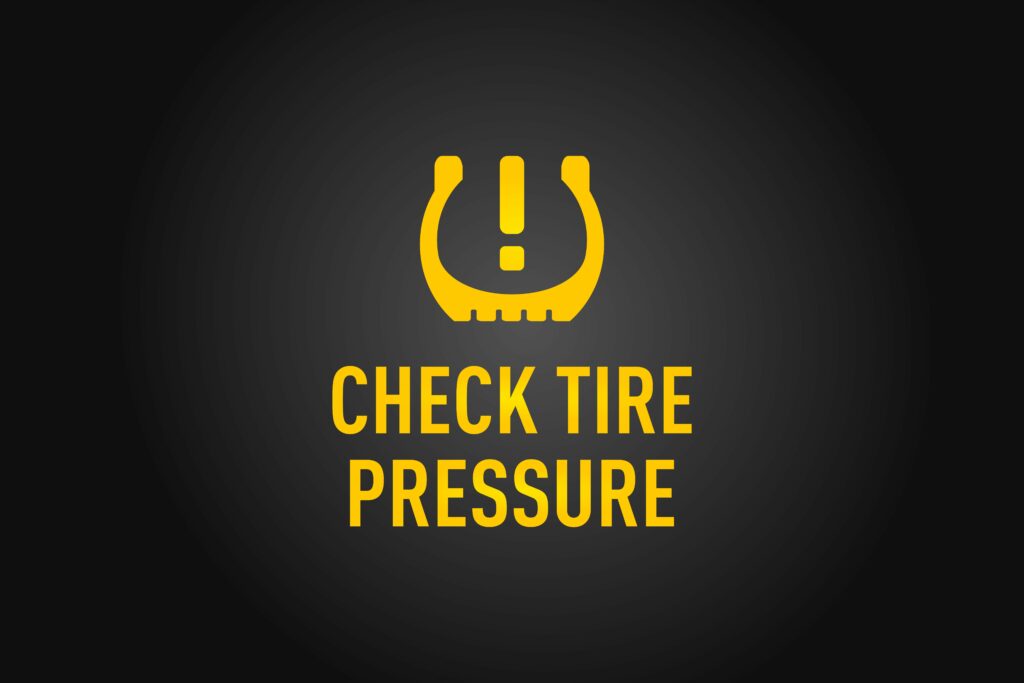What is a TPMS and What is its Purpose?
- Published -
One of the critical components of a vehicle’s safety system is the Tire Pressure Monitoring System (TPMS). This system ensures that drivers are promptly informed if their tire pressure drops to a level that could compromise safety. But how exactly does it work? Let’s delve into the intricacies of TPMS and understand its significance.
The Role of TPMS
At its core, the TPMS is designed to alert the driver when one or more tires are significantly under-inflated, potentially leading to unsafe driving conditions. When such a situation arises, a yellow symbol lights up on the dashboard. This symbol, resembling a horseshoe with an exclamation point inside, signifies low tire pressure.

The Need for TPMS
The introduction of the TPMS wasn’t arbitrary. For years, there was a cloud of uncertainty regarding the correct tire pressure, leading to numerous avoidable accidents. Before the advent of TPMS, drivers had to physically check their tire pressure using a manual gauge, which many often neglected. Recognizing the hazards of under-inflated tires, the US government introduced the Transportation Recall Enhancement, Accountability, and Documentation (TREAD) Act. A pivotal result of this act was the mandate for most vehicles sold in the US post-2007 to be equipped with a TPMS.
Types of TPMS
Broadly, there are two types of TPMS – Indirect and Direct.
- Indirect TPMS
- Functioning:
- Doesn’t measure tire pressure directly.
- Uses wheel speed sensors, which are also utilized by the anti-lock brake system.
- The on-board computer compares the rate of wheel revolutions and other vehicle data.
- If a wheel spins faster than expected, it indicates potential under-inflation, alerting the driver.
- Advantages:
- Cost-effective compared to direct TPMS.
- Requires less maintenance and programming over time.
- Simpler installation process.
- Disadvantages:
- Can give inaccurate readings if tire sizes are changed.
- Unreliable with unevenly worn tires.
- Needs resetting after inflating tires or routine tire rotation.
- Functioning:
- Direct TPMS
- Functioning:
- Uses sensors inside each tire to monitor specific pressure levels.
- Can also provide temperature readings from inside the tire.
- The data, including tire pressure, is sent wirelessly to a central control module.
- If the pressure is below the safe limit, the indicator light on the dashboard is activated.
- Advantages:
- Provides actual tire pressure readings.
- Maintains accuracy even after tire rotations or replacements.
- Sensors usually have a long battery life, often lasting around ten years.
- Can be integrated into the vehicle’s spare tire.
- Disadvantages:
- Generally more expensive than indirect TPMS.
- Although resynchronization is simple, it might require specialized tools.
- Batteries are typically non-serviceable, meaning once drained, the entire sensor needs replacement.
- Proprietary technology can make service and replacements a challenge for many consumers and technicians.
- Vulnerable to damage during tire mounting or demounting.
- Functioning:
TPMS and Safety
Regardless of the type of TPMS, both systems have the same end goal: ensuring driver safety by monitoring tire pressure. However, it’s essential to remember that while TPMS is a valuable tool, it doesn’t replace the need for manual checks. Regular manual air pressure checks should still be a part of every driver’s routine, with TPMS serving as an additional layer of safety and convenience.

How are TPMS Used with RVs?
Recreational Vehicles (RVs) are unique in their size, structure, and purpose, making tire safety even more paramount. Given the significant weight and the extended road trips these vehicles often undertake, ensuring optimal tire pressure is crucial. Here’s a look at how TPMS is integrated and utilized with RVs:
- Enhanced Safety on Long Journeys:
- RVs are typically used for long-distance travel, and an under-inflated tire can lead to increased tire wear, reduced fuel efficiency, and even blowouts. TPMS systems in RVs provide an additional safety layer, ensuring drivers are promptly alerted about any tire pressure issues.
- Monitoring Multiple Tires:
- RVs, especially larger models, have more tires than standard vehicles. Some TPMS systems designed for RVs can monitor up to 22 tires, ensuring comprehensive coverage.
- Custom Pressure Thresholds:
- Given the varied sizes and types of RVs, many TPMS systems allow users to set custom pressure thresholds for each tire. This feature ensures that the system is accurately calibrated to the specific needs of the RV.
- Signal Boosters:
- Given the size of many RVs, signal transmission from the tire sensors to the central monitor can sometimes be challenging. Many RV-specific TPMS systems come with signal boosters to ensure uninterrupted communication, even in larger vehicles.
- Diverse Sensor Options:
- RV users can typically choose between internal and external sensors. While internal sensors offer more accurate readings and protection from theft or damage, external sensors are easier to install and replace.
- Integration with Other Systems:
- Modern RVs often come with integrated safety systems. TPMS can often be integrated with these systems, providing a holistic overview of the vehicle’s health and safety.
For RV enthusiasts, safety on the open road is paramount. Integrating a TPMS ensures that tire health is continuously monitored, reducing the risk of unexpected issues and ensuring peace of mind during those long, scenic journeys.
